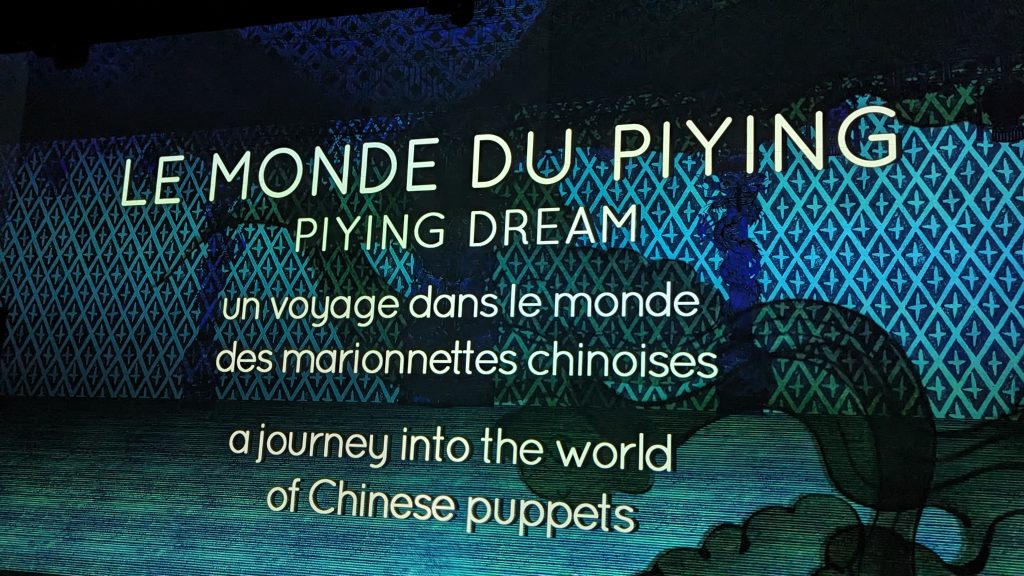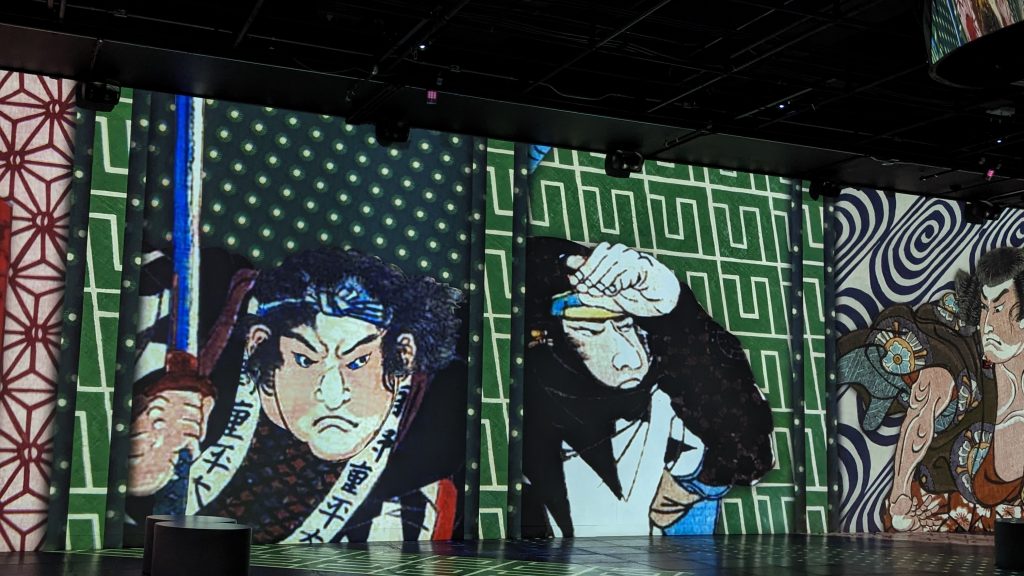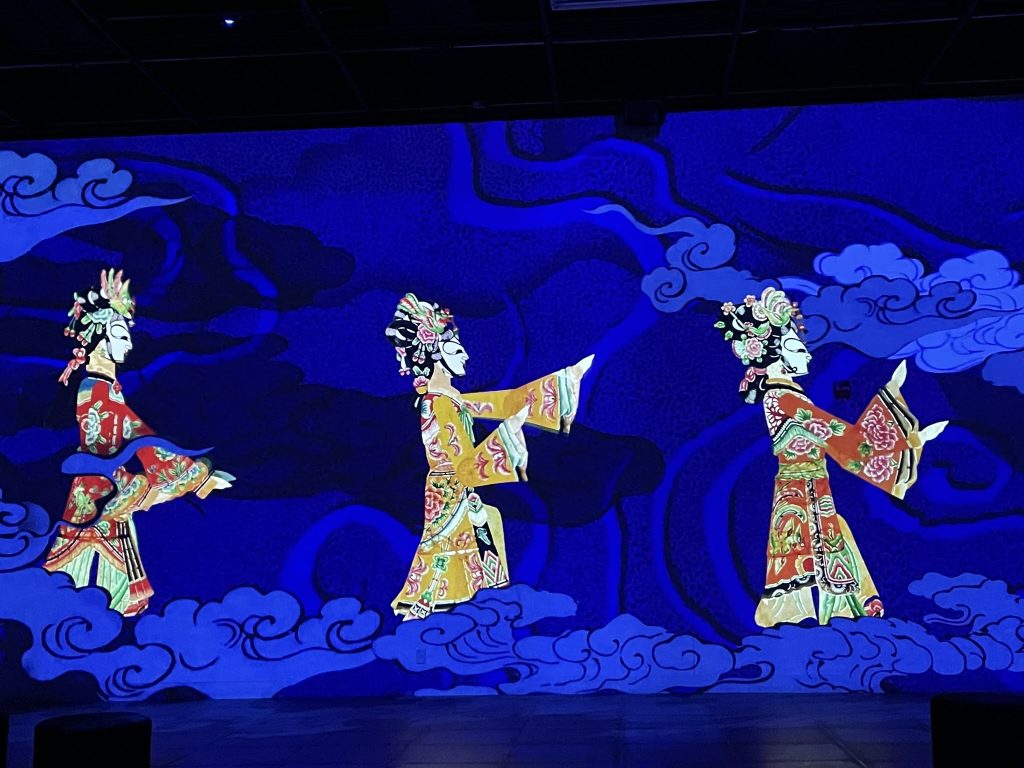We have visited other large interactive multimedia exhibits, such as the immersive Van Gogh experience, so when we had some spare time during our Montreal trip we decided to check out Oasis Immersion. Oasis is a walkable museum with immersive galleries, light installations, and a lounge area with café.


During our visit, the exhibition on show was “Dreaming of Asia,” created in collaboration with French multimedia artist Danny Rose.
The first gallery was based on the most famous painting in China, Along the River during the Qingming Festival. This large-format painting featured hundreds of characters and vignettes, all brought to life with animated video and music. This painting is known as the “Chinese Mona Lisa”, attributed to Song dynasty artist Zhang Zeduan (1085-1145).
The original painting on a five-meter scroll depicts the daily life of different social strata during the Song dynasty (between 960 and 1279). Featuring more than 500 characters, 60 animals, and 20 boats, the canvas is rich in details about trade, crafts, folklore, architecture, and transportation of the era.
This experience was co-produced with Chinese immersive site Temple of Light, first conceived in virtual reality and then adapted for this immersive environment.
Another gallery featured the Pi Ying Chinese shadow puppets come to life in a presentation entitled “Piying Dream.” This ancient art form has been recognized by UNESCO as important cultural heritage art form, with each performance recounting epic tales, ancestral legends, and folklore.
Pi Ying, also known as “shadow puppet theater”, is an ancient art form celebrated for over two millennia for its ability to captivate and amaze audiences of all ages.
Recognized as the world’s oldest form of puppet theater, this art form is based on a unique technique, which uses cut-out figures and light effects to tell captivating stories that draw on China’s rich cultural heritage.
According to legend, this practice dates to the time of Emperor Wu of the Han dynasty. This was also co-produced with Chinese immersive artists Temple of Light.
The third gallery was “Spirit of Japan,” based on the artistic movement Ukiyo-e, “images of the floating world.” Dating to the Edo period (1603-1868), this style is renowned for its ability to capture the ephemeral essence and beauty of everyday life.
Ukiyo-e incorporates both painting and printmaking, emphasizing fluid lines, vivid colors, and varied subjects. This gallery included geishas, samurai warriors, and spirits.
Ukiyo-e was very influential on Western art, including on the impressionists and avant-garde artists, as well as on dance and music composition.
This exhibit featured interactive elements, such as cherry blossoms that fell to the floor and were swept aside as you walked across the room. The lanterns gently lifting off into the nightime sky was a favorite part of the exhibit for me.
While I found the experience fascinating, much of the art and cultural heritage represented are probably alien to many Western visitors. I think that a lack of sense of the historical context probably makes much of the exhibition more difficult to enjoy fully.





